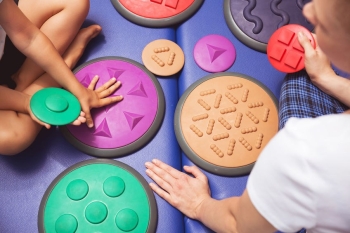
Binge eating puts us in an emotional, addictive and trance-like state. When we binge, we use food to soothe negative emotions. Food becomes our cure-all. Feeling sad? Eat. Feeling angry? Eat. Feeling scared? Eat. Feeling lonely? Eat. Mindfulness allows us to deconstruct this trance-like state. The Mindful Eating Exercise below reconnects us to each of our individual senses, and helps us to map out how these senses are connected to binge triggers.
Mindful Eating Exercise
Preparation:
Choose a food that doesn’t normally trigger binge eating, something you can typically eat in moderation. The goal is to choose a food that doesn’t inspire an emotional reaction. Many folks find saltine crackers are a good place to start. This helps keep the focus on your body’s reaction to the food, rather than your brain’s. Please note, that this is an advanced level exercise, and people early in the recovery stages of binge eating, may not be ready to try this exercise in an unsupervised setting. That is OK. Help is available.
Sight:
- Observe the food and answer the following questions:
- What color is it?
- What texture?
- Does it look dense? Hollow?
- Look at it from multiple angles. Examine it like a visitor from another planet who’s never before encountered this food. Does it look like food? Why?
- How does its appearance impact your expectation of the food? What does it look like it will taste like? Do you want to taste it?
Smell:
- Smell plays a large role in taste. Inhale the scent of the food and answer the questions below:
- What does the food smell like?
- Does it smell salty? Yeasty? Burned? Soft? Sharp?
- Pinch your nose and take a bite – does the taste change without your sense of smell?
- What memories come to mind? What is your earliest memory of this smell?
- Does this food’s smell make you want to eat the food more or less?
- Close your eyes and smell the cracker. Which sense has a bigger impact on your desire for the cracker – sight or smell? If you never saw the cracker, only smelled it, would you want to eat it?
Touch:
- What does it feel like when we pick up the food? Wet? Smooth? Rough? Dry?
- When you put the food into your mouth, how does the sense of touch change?
- What part of your mouth touches it first?
- Do you like the texture? What are other things in your life that have this texture?
- What is a strong memory you have of this texture?
- Close your eyes as you touch the cracker. Which sense of the three has a bigger impact on your desire for the cracker – sight, smell or touch? What about touching it with your fingers versus your lips?
Taste:
- Take a bite and try to notice which parts of your tongue taste the food. Sweet and salty receptors are at the front of our tongue. Sour runs on the sides, and bitter towards the back.
- Does the food have one taste at the beginning of the bite and a different one at the end, or is it the same all the way through?
- What is your first or strongest memory associated with this taste?
- Does the taste make you want to eat more? Does the taste have any affect on you?
- Close your eyes and pinch your nose as you taste your cracker. Does taste have a bigger or smaller impact on your desire for the cracker? If you couldn’t taste it would you still want to eat it?
Sound:
- Does the food have a sound when you touch it?
- As you chew, what does it sound like? Do you like the sound of chewing?
- Take another bite. Is the food crunchy? Chewy? Soggy? Slurpy?
- Listen to your heart beat as you chew. Is it fast? Slow? In synch with your bites?
- Does sound impact your desire to keep eating?
- If you couldn’t hear while you ate, would that have any effect on your desire for the cracker? How important is sound to you as you eat, relative to the other five senses?
Give yourself one whole cracker for each sense (5 total crackers), and put the rest away. Take your time. As you go, focus on the task at hand. It’s normal to have judging thoughts such as “should I be eating this?” Or “do I look stupid?” Give yourself permission to put those thoughts to the side – if anything important comes up, you can always come back for it later.
Reflect:
After you have completed all sensory prompts, put the crackers aside and reflect on how your senses relate to your binge triggers. During this exercise, which sense had the most allure for you? Which sense felt the most trance-like? You may find that the sight of ice cream or the smell of chocolate immediately moves you to binge. You may find that you don’t really notice or think about texture at all when you are bingeing. This information helps us understand both what our triggers are, and what senses we can better develop to keep ourselves present, or mindful as we eat.
Being fully present with our bodies as we eat allows us to notice sensations like hunger, fullness or bloating. Our five senses send different signals to our brains depending on our level of fullness. For instance, when we are hungry the smell of frying eggs might cause our stomach to grumble or our mouths to water – increasing our desire for those eggs. But when we are stuffed, that same smell of frying eggs might cause our stomach to turn – our sense of smell sends a message to our brain that “we are already full, thanks!” Mindfulness allows us to tune into these cues and the ways they shift in response to sensations of hunger or satiety. With time and practice, you can learn to understand the cues our five senses offer you instead of being sent into a trance or on a binge.
Having trouble with this exercise or looking for more ways to practice mindfulness? Help is available - call 215922LOVE and speak with a mindfulness counselor today.























